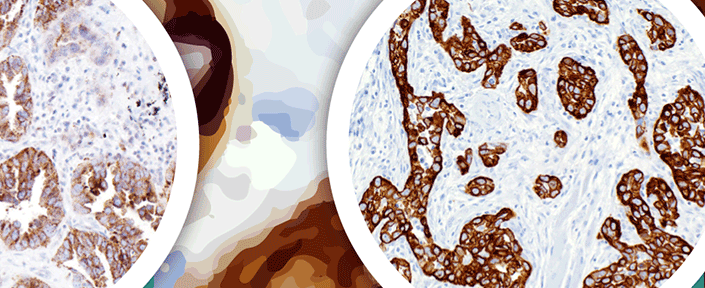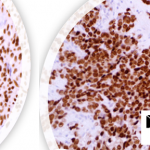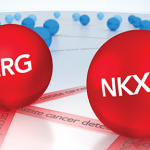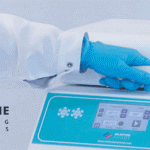Novel Pulmonary Markers from Cell Marque
Products are for professional/laboratory use only.
We are pleased to share with you the below novel pulmonary markers from Cell Marque.
GLUT1 (polyclonal)
GLUT1 is detectable in many human tissues including colon, lung, stomach, esophagus, and breast. This antibody is helpful in discriminating between reactive mesothelium and malignant mesothelioma. It can be used as a reliable antibody to distinguish reactive mesothelial cells from metastatic adenocarcinoma particularly body cavity effusions, ovarian, and pulmonary adenocarcinoma.
IMP3 (EP286)
IMP3 is a useful marker in identifying malignancies in pancreatic ductal adenocarcinoma to distinguish them from benign pancreatic lesions, such as chronic pancreatitis. IMP3 is also known to be strongly expressed Reed-Sternberg (RS) cells and mononuclear RS for classic Hodgkin’s lymphoma (cHL). The advantage of this marker for cHL is that it does not stain immunoblasts or background neutrophils, eosinophils and macrophages and is more sensitive than the more traditional markers CD30 and CD15. It is also positive in the popcorn cells of nodular lymphocyte predominant Hodgkin’s lymphoma that are usually negative for CD30 and CD15.
SOX-2 (SP76)
Anti-SOX-2 antibody recognizes lung squamous cell carcinoma (LSCC). Anti-SOX-2 staining was seen in over 90% of LSCC which largely paralleled p63 expression. Combined p63 and SOX-2 expression was seen in 94% of LSCC and 12% of LACA. The sensitivity of anti-p63 is equally as high as SOX-2 but its specificity is similarly variable; p63 was seen at least focally in close to 30% of LACA. When used together, anti-p63+/anti- SOX-2+ applied to the same tumor cell population is >90% specific for LSCC.
Mesothelin (EP140)
Mesothelin is a mesothelioma marker that is utilized in lung differentials. Mesothelin is important for distinguishing mesothelioma from lung adenocarcinoma. Due to mesothelin’s high sensitivity, if it stains negatively, then it is unlikely that the tissue is a mesothelioma. Mesothelin should be used in a panel with calretinin, cytokeratin 5 & 6, and Ep-CAM (Ber-EP4).
HBME-1 (HBME-1)
HBME-1 is useful in labeling mesothelial cells, both bengin and malignant. It is used to distingush between mesothelioma from adenocarcinomas of various orgins. Recent studies have shown
HBME-1 being used to differentiate thyroid carcinoma (follicular and papillary) from benign thyroid lesions.
Caveolin-1 (2297)
Caveolin-1 is useful in differentiating epithelioid mesothelioma from lung adenocarcinoma. Caveolin-1 is positive for mesothelioma and negative for lung adenocarcinoma which is why this marker should be used in lung panels in conjunction with napsin A, TTF-1, CEA, and Ber-EP4. Caveolin-1 is comparable to, and in some cases even superior to, other established markers for mesothelioma such as podoplanin, calretinin, HBME-1, and WT1.
Cytokeratin 5 + Cytokeratin 14 (EP1601Y + LL002)
Cytokeratin 5 is useful in the differential diagnosis of metastatic carcinoma of the pleura versus epithelial mesothelioma. Cytokeratin 14 is useful in the differentiation of squamous cell carcinoma from other epithelial tumors. With the combination of Cytokeratin 5 with Cytokeratin 14, this antibody has been found to be useful in the identification of basaloid phenotype of breast carcinoma, a tumor with poor prognosis.
Napsin A (MRQ-60)
Napsin A is expressed in the cytoplasm and is strongly positive in up to 80% of primary lung adenocarcinomas. Squamous cell carcinomas and small cell carcinomas of the lung are characteristically negative for napsin A. Pulmonary adenocarcinoma with enteric differentiation (PAED) is a special case in that essentially none of these cases are labeled by napsin A antibody.







